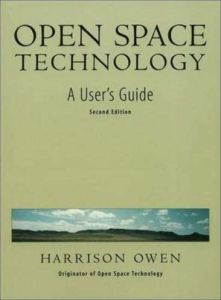Join getAbstract to access the summary!

Join getAbstract to access the summary!
Harrison Owen
Open Space Technology
A User's Guide, 2nd Edition
Berrett-Koehler, 1997
What's inside?
Here’s a radical management idea: Take your best people, sit them in a circle, give them a problem, and let them solve it.
Recommendation
Harrison Owen presents a hands-on, step-by-step manual for putting on an open space technology workshop. In OST workshops, participants basically set and facilitate the agenda with some guidance from a facilitator. Here, the book’s examples are particularly handy. Owen suggests conference duration, agenda and techniques including how to set up a meeting, invite participants, prepare the logistics and meeting site, facilitate activities and more. While these workshops generally involve hundreds of people, you can also put on an OST event with as few as five. If you want to read gripping business philosophy, look elsewhere - this is a practical how-to manual, a task it accomplishes quite wellgetAbstract.comrecommends this informative guided tour of the OST process to those who want to know how, because they already know why.
Summary
About the Author
Harrison Owen, the President of H.H. Owen and Company, originated open space technology. He has worked with a variety of organizations in putting on OST events, including small West African villages, urban community organizations in the U.S. and Africa, the Peace Corps, regional medical programs, the National Institute of Health, and the Veterans Administration. His other books include: Our Now: The Story of Open Space Technology, Spirit: Transformation and Development in Organization; Leadership Is; Riding the Tiger; The Millennium Organization and Tales from Outer Space.




















Comment on this summary